You’ve probably seen Transit, the collaboration between Baby Audio and Andrew Huang, on the Interwebs and YouTubes. Well, surprise: it’s not just for massive EDM-style breakdowns or something like that. It’s an eminently tweak-able, programmable tool that lets you combine multiple effects and set them in motion. And it’s surprisingly fun to build up your own multi-effects from scratch. Let’s have a look.
Okay, first – if you do want completely over-the-top transitions and some fairly extreme presets, those are in there. And there are obviously times where that’s useful and desirable. But I’m going to assume you get that functionality already from Transit’s marketing, and to have a plug-in that only did that would be a little bit of a gimmick. Uh, anyone remember AIR’s theRiser? That is limited to a narrow use case, and yet still has a weirdly complicated, intimidating UI. (Sorry, theRiser fans!) Fortunately, Transit is the opposite – broadly useful, easy to use, and even holds up for every-day effects use.
On the actual transition usage – Andrew covers that and the features really well, of course:
And yeah, a lot of folks will use this for transitions live, as Rachel K Collier demonstrates – something Ableton users had tended to do with Effect Racks, but here with I think reasonably more flexibility and ease of configuration:
Bu let’s go the opposite way and look at this plug-in as a multi-effect more generally.
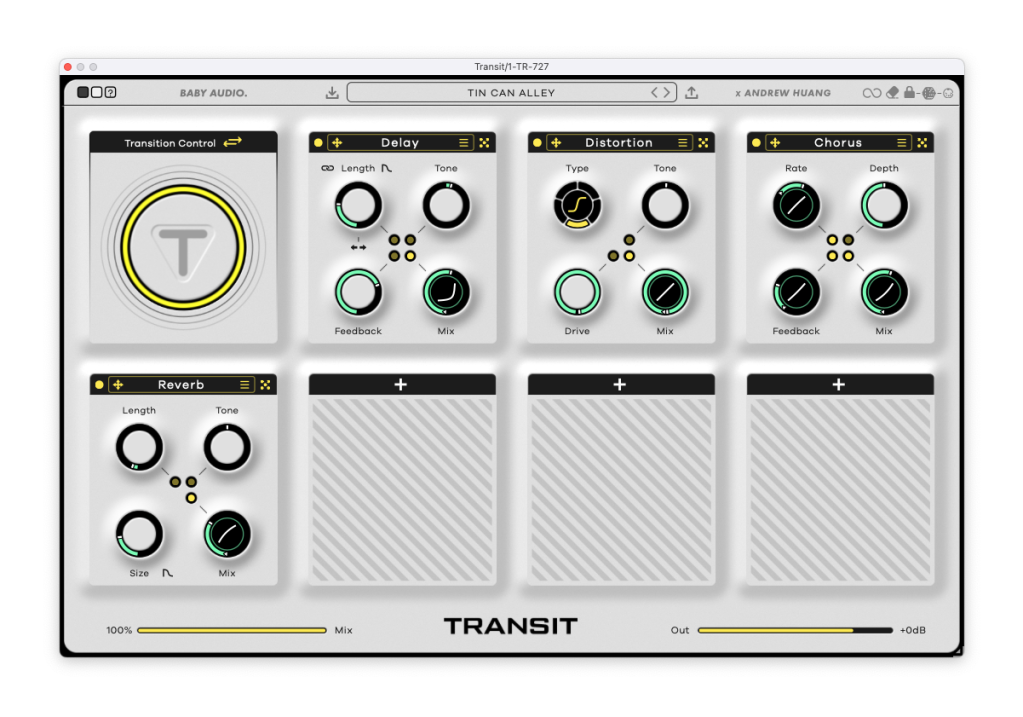
A nice grab bag of effects
Before we get into any of that motion or transition stuff, what Transit really is at its core is a multi-effects plug-in. It’s got seven effects slots, called modules, which you can drag to reorder. You have a selection of modules; you can only use once – modules already in use are grayed out. (I got around that by just creating multiple instances of Transit.) Included:
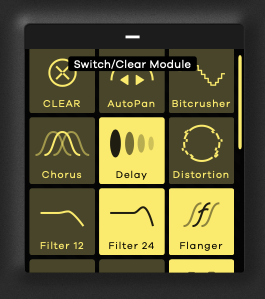
- AutoPan
- BitCrusher
- Chorus
- Delay
- Distortion (with tanh, atan, fold, rect, and hard modes)
- 12 filter
- 24 dB filter
- Flanger
- Noise (with its own resonant filter)
- OTT – the three-band compressor inspired by the phenomenon that is … one Ableton Live preset (“Over The Top”)
- Phaser
- Pitch – maybe the weirdest of them – it’s just a continuous sin, saw, square, or triangle wave with pitch control and (frequency) spread – simulate your tinnitus for everyone if you want, or I guess pitched risers
- Pitch Shift
- Pump (a simple pumping effect, actually enveloping the sound – not a compressor)
- Reverb
- Stereo Spread
- Tremolo (with multiple shapes)
- Utility (gain/pan/tone)
Honestly, Baby Audio could probably have gotten away with just doing that – that’s a nice little effects selection. You’ve got most of these already, but it’s nice to have them in a single UI. The modules are unsurprisingly up to Baby Audio’s usual quality standards – as we’d seen with their BA-1 synth, Parallel Aggressor dynamics processor, Comeback Kid delay/echo, and Spaced Out reverb/delay, to name a few.
Transitions and Motion
The big twist here (literally) is the Transition Control knob. Crucially, this controls not only the Mix value of each module, but also separate ranges of parameters across each module – and you can control those ranges, and even the interpolation curves between values per parameter. Turn the Transition Control knob (left), and you move selected parameters (right) along any specified curve/range.
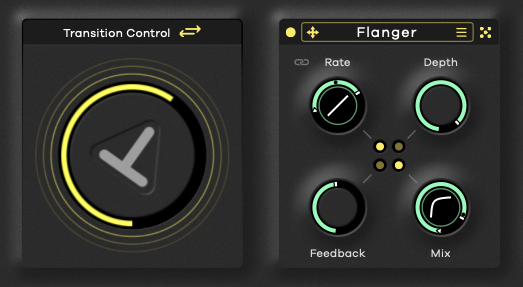
That’s a simple, even obvious design, but maybe so simple and obvious that a lot of plug-ins and hosts make it complicated to do. You could dive into a bunch of separate effects with separate interfaces and work out that way. Or you could gang controls into macro knobs in, say, an Ableton Live Effect Rack, using your own selection of plug-in effects in the process, but you wouldn’t have the same immediate controls of interpolation between values. (Note to Ableton, etc.: please feel free to implement that, though.) And of course you also can then save your own presets quickly.
In addition to being able to then easily automate that single Transition Control parameter in your DAW, Transit also features a simple but effective Motion Sequencer – that’s essentially a loopable envelope in the plug-in that’s synced to the DAW’s host tempo.
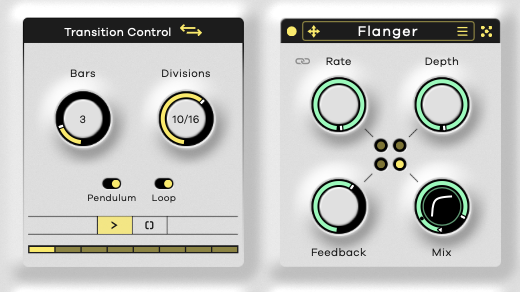
And you really don’t have to use this for transitions. You can use Transit to dial in subtle or extreme combinations of effects. You could make some sounds that morph over time or loop, thinking of that Transition Control more as a modulation source than “instant breakdown button.” And so on.
There are some nuances to that, too – for instance, Delay has a “tails” toggle tucked next to length, which either cuts the delay tail when you revert transition to zero, or leaves it ringing (basically it’s wet/dry either pre or post effect).
There are some really beautiful presets here, from Baby Audio, Venus Theory, and others. Of course, these are heavily source material dependent – which means sometimes you may opt for just experimenting with randomization instead.
Really tailoring to your material once you get the hang of it is all about designing sounds on the fly. And it’s really quick to build up multi-effects in this UI. Here’s a quick guide to all you can tweak, from scratch:
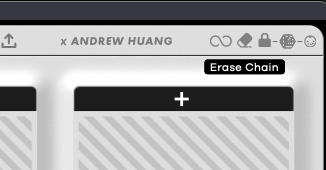
From the toolbar, choose Erase Chain to get to an INIT patch.
I like to tweak with Transition turned up, then dial things back, since by default the mix value of each module will be controlled with the Transition parameter.
Click (+) to add modules (or choose CLEAR to remove them).
For each module, you can then tweak values – or pull up a preset from the menu at top.
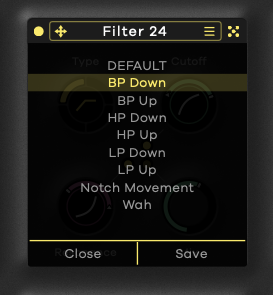
For (nearly) all parameters, you can also enable/disable Motion. This sets a max/min range for that value and interpolates through it as you move (or automate) the Transition parameter. That can really animate some parameters like time. In the center of each knob, there’s also a curve you can drag up or down to change the interpolation between values or easing.
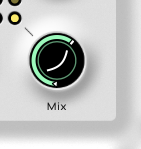
A good way to audition the impact of that easing curve is to set up the Motion Sequencer to loop (and possibly pendulum) and hit play, and listen as the curve repeatedly morphs through values.
And yes, motion is bidirectional. Just drag on the ring around each parameter to move the max and min. Green is positive motion; red is negative motion (relative to Transition).
It’s also a good idea to try enabling motion for parameters one at a time, because sometimes the effect of one is more dramatic than hitting all at once. That motion works especially well for time-based parameters, too, as you get a sense of movement.
You can randomize values. I mean, let me repeat that – this is a multi-effect with complete randomization, both of which modules are loaded and their parameter values. You can randomize individual modules. And for the main randomization, there’s granular control via the Random Lock feature. This lets you control any element – whether a module slot is randomized (with a new effect instance), individual parameters, and even each motion toggle.
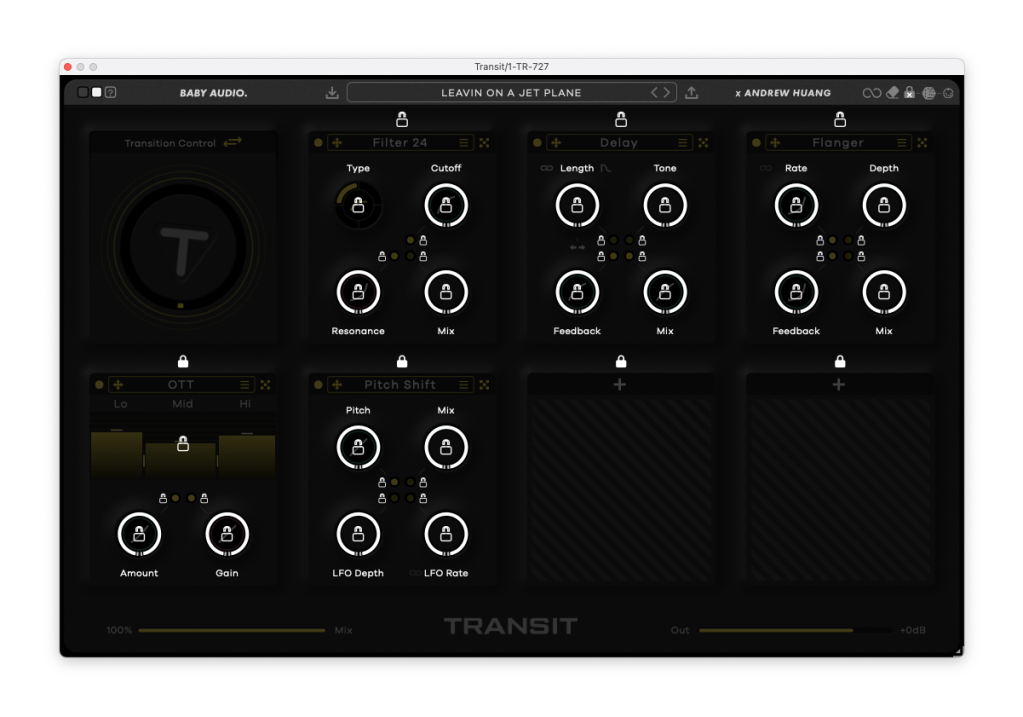
Honestly, Baby Audio and Andrew may have kind of buried the lede here. For every person who wants to add easy transitions to a song, I’m sure there’s a person who wants to roll the dice and get some inspiration. That’s very much in the tradition of Baby Audio, who have made this a feature of all their plug-ins and their freebie giveaways, too.
Here it is in action, on a Roland Cloud TR-727 (with DJ Pierre’s pattern playing there):
At the beginning, you see just playing with it as a multi-effect. And (in a second instance) you can add some motion. At the end, I show what looped/pendulum motion does with modulation, basically the equivalent of putting an LFO on a macro knob.
Conclusions
Transit, as advertised, absolutely makes it easy to spice up a mix and make a splashy multi-effects breakdown or transition, yes. But where that could get stale, it’s equally easy to design sounds from scratch and use this as a multi-effects plug-in – and having that One Knob manipulating everything turns out to be immensely satisfying for sound design exploration, too.
I really love the fact that you build changes from the parameter out, rather than from a modulator in. That’s something that has a lot of potential beyond what’s realized here. And then randomization is just lovely. So, sure, while everyone is working on overcomplicated research into AI, maybe all we really need is our ears and some controllable randomization. I’m not surprised.
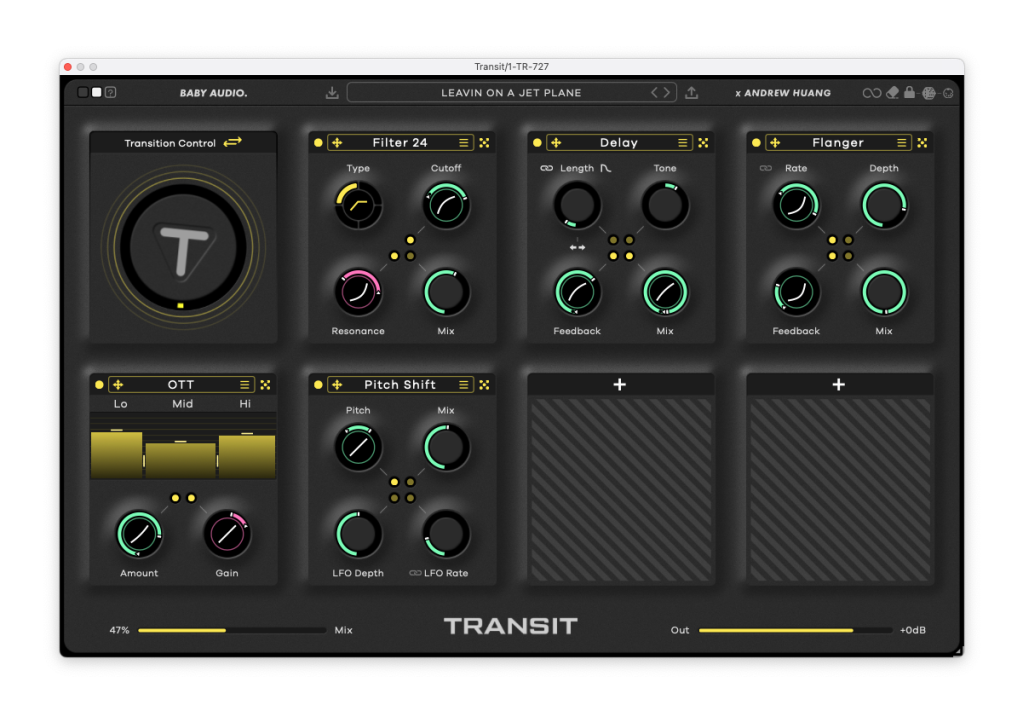
I do have some nitpicks here and there. It feels a little like Baby Audio could have gone a bit further on effects variety – where’s their great VHS effect, for instance? The UI has Baby Audio’s usual pillow-y effect, but the actual parameters are tiny. I do wish the “Pump” effect let you add Motion to the time division, though maybe they found some reason in testing that that doesn’t work. And most importantly, because this is a multi-effects plug-in full of dynamics-altering modules and resonant filters, wow oh wow do you miss having any kind of auto-gain or adaptive limiter or even just a meter on the master output setting on the bottom right. This really quickly becomes a “let’s clip the level on this track” tool. That’s manageable, of course, but it wants a master compressor or something – especially as Andrew Huang’s hardware multi-effect module, Endorphin.es Ghost, even has one. Next version?
You can also make this more like a multi-effect and less like a “transition” tool per se by toggling the FX State at 0% control in the upper right-hand corner. If you set that to ON, the modules will remain on. Then just set relevant gain / mix control to a minimum you want. (In other words, you can manually reproduce the default behavior by setting that range to zero.) This is why I ultimately do find Transit’s design useful – it still gives you a single macro control over lots of related effects all at once, with interpolation curves that things like Ableton Live’s Effect Rack lacks (even with Chains). Correction: I failed to mention this in the first draft of the story; thanks, Aaron.
If you have all these effects covered already, and your own automation/macro approach, you may well find this overkill – and then I do encourage you to look at Baby Audio’s Super VHS, for example, for something more exotic. But I was personally surprised at how much having a different interface tended to point me toward other sound design possibilities. It’s just fun cooking up presets with this thing, honestly. I hope some of those ideas for easy routing and parameter mapping get picked up elsewhere.
Transit is on an introductory sale now for $59 (regularly $99).
The 40% discount pricing is also available from Plugin Boutique.
If you buy something from a CDM link, we may earn a commission.